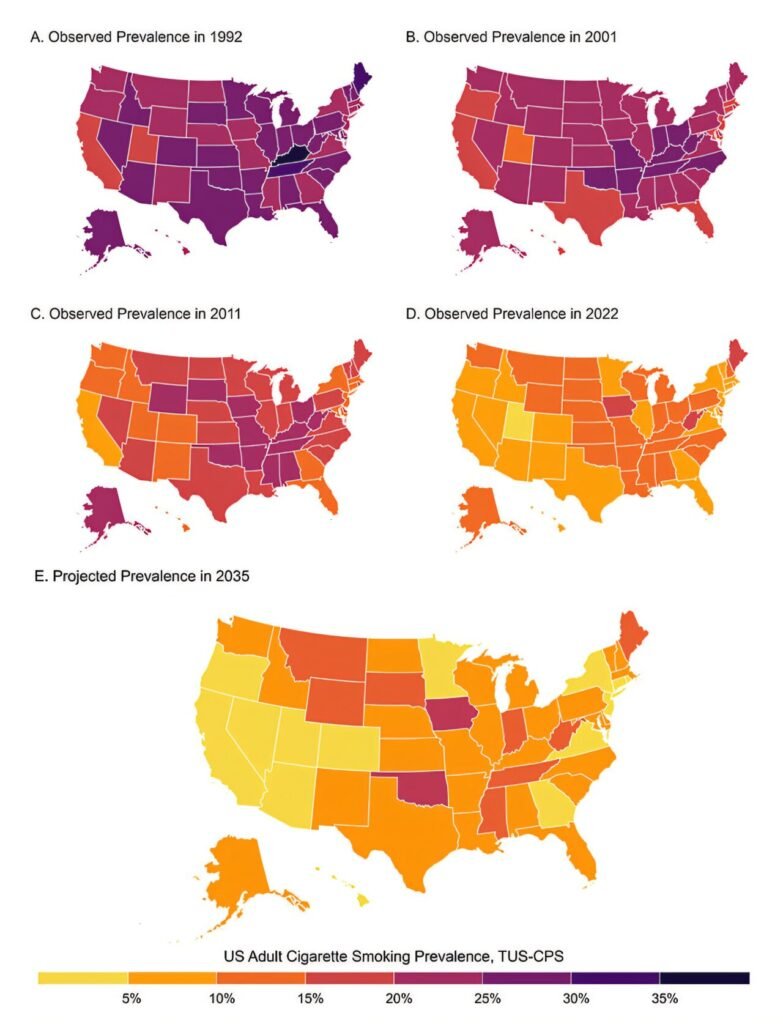The University of California San Diego recently conducted a study that revealed a significant decline in cigarette smoking across the United States, largely driven by young adults. The study, published in JAMA Network Open on April 25, 2025, highlighted the fact that states with historically high smoking rates have experienced the most dramatic decreases in smoking prevalence. However, the progress in smoking cessation among adults over the age of 50 has been slower, which could prolong the public health burden of smoking-related diseases and death.
According to Matthew Stone, Ph.D., the first author of the study and an assistant professor at the UC San Diego Herbert Wertheim School of Public Health and Human Longevity Science, the rapid decline in smoking among young adults is a clear indication that the smoking epidemic is on track to end in our lifetime. It is projected that the national smoking prevalence will drop to under 5% by 2035. However, the slower decline in smokers over the age of 50, especially in states with high historical smoking rates, suggests that the rates of lung cancer, heart disease, and chronic obstructive pulmonary disease caused by lifelong smoking will take longer to decrease.
The researchers analyzed data from the Tobacco Use Supplements to the U.S. Census Bureau’s Current Population Survey, which provided insights into smoking prevalence across different demographics. The study found that there were significant differences in smoking rates across U.S. states in the 1990s and in 2022, with the most substantial decline observed in states with historically high smoking rates. While there was a larger decline in young adult smoking compared to states with lower historical smoking rates, the slower decline among older adults offset these gains.
Since the 1950s, when the link between smoking and lung cancer was first established, national smoking rates have plummeted. In 1955, 56.9% of U.S. adults smoked, but by 2022, that number had decreased by 50%. The trend is expected to continue, with smoking rates projected to halve again by 2035. However, concerns have been raised about the tobacco industry’s success in recruiting teenagers into e-cigarette use and nicotine addiction, which could have long-term implications.
The study, titled “State and Sociodemographic Trends in US Cigarette Smoking With Future Projections,” provides valuable insights into the changing landscape of smoking prevalence in the United States. For more information, you can access the full study published in JAMA Network Open. This research sheds light on the progress made in reducing smoking rates, as well as the challenges that lie ahead in addressing smoking-related health issues.


